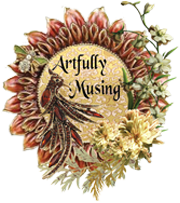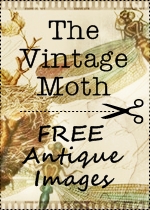 Everyone thinks tulips are from Holland. The truth is both the flower and its name originated in the Persian empire. The tulip, or lale (from Persian) لاله, lâleh) as it is also called in Turkey, is a flower indigenous to Turkey, Iran, Afghanistan and and other parts of Central Asia.
Everyone thinks tulips are from Holland. The truth is both the flower and its name originated in the Persian empire. The tulip, or lale (from Persian) لاله, lâleh) as it is also called in Turkey, is a flower indigenous to Turkey, Iran, Afghanistan and and other parts of Central Asia.Legend has it that tulip was first brought to northwest Europe by Oghier Ghislain de Busbecq, Ambassador from Ferdinand I to Suleyman the Magnificent of the Ottoman Empire in 1554. This was derived from poetries in Persian literature too laborious to repeat here.
Another account is that of Lopo Vaz de Sampayo, governor of the Portuguese colonies in India. It was said that when he returned to Portugal in disgrace, Sampayo supposedly took tulip bulbs with him from Ceylon, then a part of ancient India. This account is now hotly disputed because tulips, unlike tea, cannot be grown in Ceylon, now known as Sri Lanka and the island itself is far from the route Sampayo's ships should have taken.

Even if the stories are true, none of this explains how tulips ended up in the Netherlands. Accordingly to my sources (2 little birds I sent across), it was the work of an Indian Kashmirian girl called SriVina nicknamed Sylvia who is reputed not only for her craft but also her beauty and cleverness.
 Now, tulips have been found near her family compound at Srinagar, the capital of Kashmir (also part of ancient India and now part of India) since 1000 AD (see postcard on left). Although its beauty has been likened to the the eyes of Narges and its intoxicating effect to glasses of wine, few outside of India had seen or heard of this flower.
Now, tulips have been found near her family compound at Srinagar, the capital of Kashmir (also part of ancient India and now part of India) since 1000 AD (see postcard on left). Although its beauty has been likened to the the eyes of Narges and its intoxicating effect to glasses of wine, few outside of India had seen or heard of this flower.Sylvia knew that if she could bring these flowers to the attention of the rich and famous, they would become an instant hit and their fame would spread far and wide. That would mean immense wealth for her family as the mountain behind her home were overgrown with at least 1.2m tulips, 60 varieties in all.
 So Sylvia carefully harvested the best of her crops, sorted them in the dozens and cleverly wrapped them in papyrus and Egyptian preservatives.
So Sylvia carefully harvested the best of her crops, sorted them in the dozens and cleverly wrapped them in papyrus and Egyptian preservatives. She then distributed them to all her gypsy friends (you can see Rosanna and Walter in the picture together with Mercedes and Sans) who brought with them these preserved beauties to places as far away as Italy, New Zealand, Australia and even Singapore.
She then distributed them to all her gypsy friends (you can see Rosanna and Walter in the picture together with Mercedes and Sans) who brought with them these preserved beauties to places as far away as Italy, New Zealand, Australia and even Singapore. In particular, Sylvia's own family who eventually joined the Dutch to set up the East India Company in the Netherlands made tulips an instant hit with foreign dignitries like Ferdinand I when he saw a single stalk of tulip being worn on Sylvia's silky hair.
In particular, Sylvia's own family who eventually joined the Dutch to set up the East India Company in the Netherlands made tulips an instant hit with foreign dignitries like Ferdinand I when he saw a single stalk of tulip being worn on Sylvia's silky hair. Thanks to Sylvia, tulips became such a hit that the purchase price for a single tulip-bulb of the Viceroy variety (see left pic) included “two loads of wheat and four of rye, four fat oxen, eight pigs, a dozen sheep, two oxheads of wine, four tons of butter
Thanks to Sylvia, tulips became such a hit that the purchase price for a single tulip-bulb of the Viceroy variety (see left pic) included “two loads of wheat and four of rye, four fat oxen, eight pigs, a dozen sheep, two oxheads of wine, four tons of butter , a thousand pounds of cheese, a bed, some clothing and a silver beaker.” Such a high price, estimated at approximately 2,500 guilders, for a single tulip was not unusual. During the height of the Dutch ‘tulip mania’ in the seventeenth century, a Semper Augustus, considered to be even more precious than the Viceroy tulip, could bring in close to 6,000 guilders. In fact, tulip prices and the practice of tulip speculation became so excessive and frenzied that in 1637 the States of Holland passed a statute curbing such extremes.
, a thousand pounds of cheese, a bed, some clothing and a silver beaker.” Such a high price, estimated at approximately 2,500 guilders, for a single tulip was not unusual. During the height of the Dutch ‘tulip mania’ in the seventeenth century, a Semper Augustus, considered to be even more precious than the Viceroy tulip, could bring in close to 6,000 guilders. In fact, tulip prices and the practice of tulip speculation became so excessive and frenzied that in 1637 the States of Holland passed a statute curbing such extremes.And that is how lale became the national flower of the Netherlands, the largest producer of tulips in the world. Ironically, after centuries have passed, Sylvia's garden at Kashmir had to now import the very same tulips from Holland so that in Spring every year, Kashmir celebrates the Tulip Festival with a million vibrantly coloured tulips in what many consider, the best Tulip Garden in the world.
 The Maharajah will like to express his heartfelt gratitude to Sylvia for the magnificent flowers (and the postcard). The gorgeous tulips will hopefully grace the palace garden unless the harem concubines steal them first either to beautify their own rooms or to sell them to the evil Maharajah for an indecent profit.
The Maharajah will like to express his heartfelt gratitude to Sylvia for the magnificent flowers (and the postcard). The gorgeous tulips will hopefully grace the palace garden unless the harem concubines steal them first either to beautify their own rooms or to sell them to the evil Maharajah for an indecent profit.



















































































































































19 comments:
Do you know that in Italian the Stock exchange is called Borsa? it comes from a merchant Van der Bursen who used his house as a market for tulips bulbs. Hugs
Really, wow! Rosanna must have sold some of the tulips to Ven der Bursen! :D
So nice to wake up and find a post from you, glad you found some time to create another fabulous story! Sylvia's tulips look fantastic with the Palace people. That doll was just made to carry them.
Nice to see us all having an international get-together! LOL!
Mercedes
Wow.................
I am speechless.........
You made a beautiful story and I am honored!!!
Like Mercedes said, it is so nice to see that us all having an international get-together!
Love Sylvia
I really hope they can hold onto them, what a wonderful story/history. I have always loved tulips and had never known their origin. Thank you so much for sharing the story and great photos.
Mini Hugs, Jean
Hi Merce & Sylvia, glad you both liked the story. The international gathering can happen :D. I don't mind visiting the Netherlands. The best mini museum is there! I also don't mind going back to NZ again. Merce, I am sending you an article in our local newspapers on NZ properties. If you guys come to Singapore, I will host you at my home !It's like a sleepover. Walter can sleep in the guest room and the girls in mine..lol.
JD, you are invited too! Will be great if we really can get together and look at each other's work. When I finally build my palace, I must have a party so you guys can come and give me a critique!
Anyway, I mixed some facts with fiction but often in my research, I find such interesting tit bits about the minis we make and how it linked back to India. We can always link it back somehow. That's my fun when I post. So happy that I can share this with you!
Es apasionante, leer las historias que cuentas. Gracias, por compartir tus conocimientos.
Un abrazo Carmen
Great story, I never knew that's how the tulip arrived in Holland! ;)
I do think however, that the West India Company should be East India Company. The West India Company traded mostly in the Carribean, West-Africa and the Americas. The East India Company (VOC) traded in Asia.
In your comment you mentioned something about the mini museum in the Netherlands. If you're referring to the Poppenhuismuseum in Heesch, I have to disappoint you, it closed down last December.
PS @Rosanna: That is interesting! The Dutch word for stock exchange is 'beurs', which also means 'wallet'.
Wow Josje,thanks! I went back to check Wiki and you are absolutely right about the East India Company. I thought East India belongs to the British and West to the Dutch! Thank you, again. I have changed it.
I hope you know by now that I tend to mix the fact with the fiction. Sylvia is actually a dear sweet friend from Netherlands who made the tulips for me :D.
But almost all other facts stated in the post eg the 1st 2 versions of how tulips went to Netherlands and the price of tulips were all researched online. That's why I spent at least 2 hours on 1 post. haha
Thank you for commenting on my post, really appreciate it.
Hi Dora, just translated your post. I am glad you like the story! :D
Hola Dora, sólo tradujo su comentario. Me alegro de que te gusta la historia! : D
I love your project and your story.
It's very nice and funny.
Great job.
Roberta from Italy
Hey Roberta! I have read about you ! You are Rosanna's friend :}. Thank you , your comments cheered me up loads. I am popping over to your blog to check you out right this minute.
Oh dear Josje, did the museum really close down?? Guess that makes Taiwan's the best in the world now? Wow. But when I was there, their newsletter also said something about finding someone else to take over as the economic crisis is draining their resources. I spent loads in their museum shop in my bid to help save the museum ;D
Your blog is wonderful and so full of information! You are one super talented lady, I am amazed at your creativity to make beautiful things out of unusual objects (eg: moroccan table with chinese fans!). I wonder how you get those ideas!!! You are obviously super patient too, hard to believe you haven't been a crafter from age 3! One small thing though: Kashmir is not "occupied" by India. When India got independence from the British, the king of Kashmir then CHOSE to stay part of India. The word "occupied" implies India took over Kashmir in a war or something...it's just that with the Islamic population being majority there now, they want to seperate from India and claim India is "occupying" them...which India is not!
Hi Anonymous, WOW! Thank you for your compliments :). but mostly thank you for your explanation. I have removed the word "occupied" from my post. :):):). It's great of you to take the time to read this post and then post the comment. Not sure if you will ever read this reply, but THANK YOU again :)
Dear Sans,
I just have read your beautiful story, it was so interesting and funny at the same time :) I love it!!
You did some good research lol! ;)
\Warm hugs, Jollie
O Jollie!! You read it! You read it! :)Thank you :). Those wree th edays when my stories were soooooo long ! :)
Glad you didn't fall asleep :)
Post a Comment